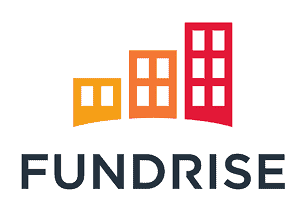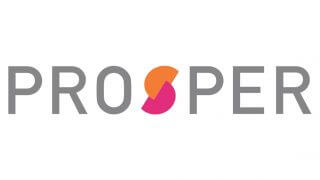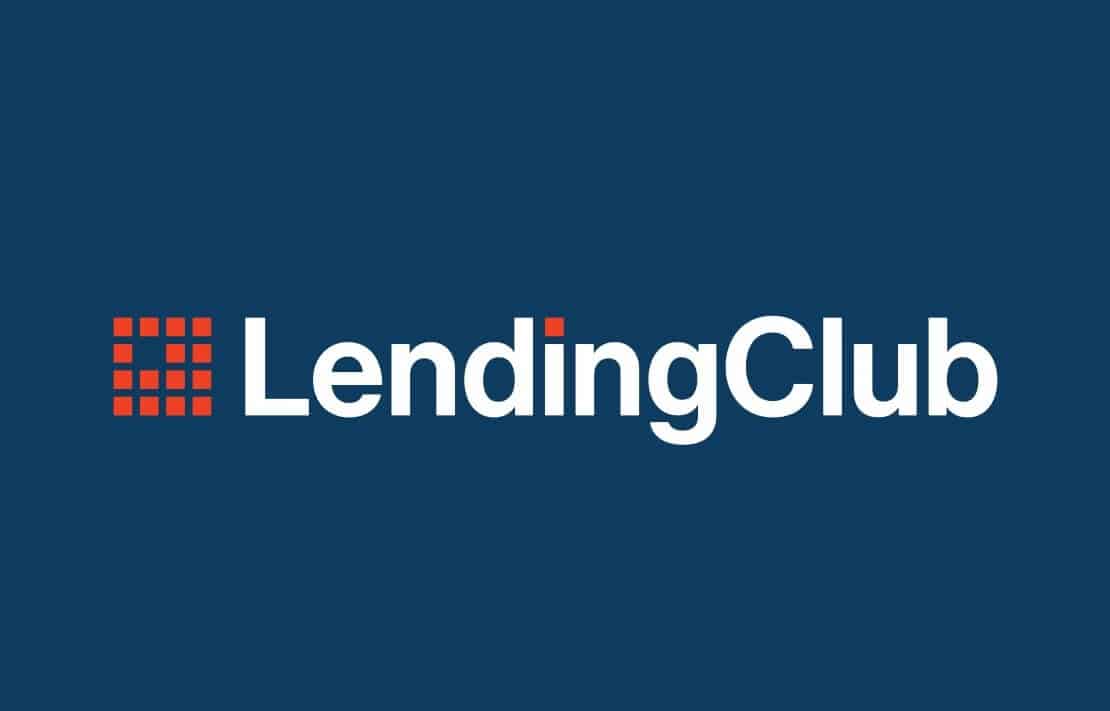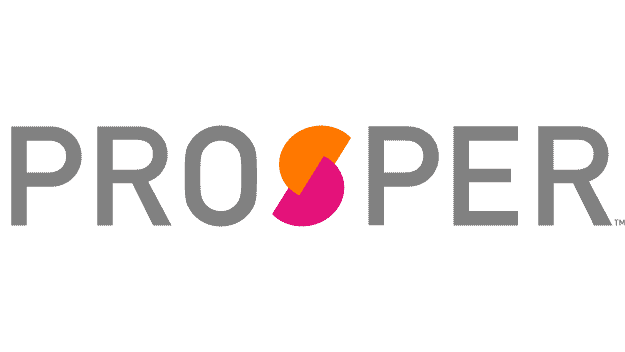Understanding Peer-To-Peer Lending & Best P2P Sites In 2021
Fintech is gradually revolutionizing the global finance scene – one of the most recent changes is Peer to Peer lending, which seeks to cut out the bank’s traditional role when it comes to giving out personal loans and other forms of finance to borrowers.
-
-
What is Peer to Peer Lending?
Instead of saving all your cash in a bank account that earns less than 2% interest or stressing over the best stock or shares to buy, you now have the option of earning in excess of 10%, passively, on the cash you deposit with an online P2P lender.
Peer-to-peer lending, also frequently referred to as P2P lending, involves lending money to individuals and companies through online services, which match lenders with borrowers.
Because peer-to-peer lending companies operate online, without a high-street presence, they have significantly smaller overheads, and this can then be passed on to consumers in more competitive interest rates and associated costs. The emphasis is on nimbleness, agility, and convenience, rather than the traditional, and sometimes stuffy appearance of established financial service organizations.
However, peer-to-peer lending also differs from the traditional alternative by being an investment opportunity that is frequently conducted for profit. Because of this, peer-to-peer lending is often characterized as being an alternative financial service. Also, although it was originally envisaged that peer-to-peer lenders would be entirely separate from the established financial architecture, as the sector has grown and developed, so partnerships have increasingly been sought with established players.
Lenders in the peer-to-peer sphere are also more likely to offer credit to those who struggle to acquire it from traditional financial institutions. This can particularly include younger people, and thus peer-to-peer companies, and fintech in general, are often branded in such a way as to appeal to the millennial generation.How does peer-to-peer lending work?
Considering the way that the peer-to-peer sector works, most P2P lending providers offer online investment platforms, which enable borrowers to attract lenders, and investors to identify and purchase lending opportunities that meet their requirements. Peer-to-peer lenders have also developed their own independent credit models, which have enabled them to suitably price and deliver approval for loans.
This is a rapidly developing sector, and thus a huge amount of competition has arisen in a fairly short timeframe. There are lots of peer-to-peer lenders competing for your custom, and attempting to separate the wheat from the chaff can be something of a baffling process. So in this article, we’re going to examine five of the top peer-to-peer lenders available, and explain exactly why you should opt for their services.
Why invest with a p2p lending website?
- Not affected by stock markets: P2P lending institutions are listed with the stock exchanges. How much you make here is therefore not directly affected by fluctuation in the equity markets and can, therefore, be used as a hedge against your share and stock interest.
- Offer higher rates compared to shares and banks: Most savings accounts by banks have their interest rate way below 3%. Not even the fixed income securities offered by the corporate and treasury bonds can match the 10%+ interest rates offered by the most peer to peer lenders.
- You don’t need to be an accredited investor: Most stockbrokers won’t facilitate your share and equity investments if you aren’t an accredited investor. You, however, don’t have to be an accredited investor to deposit funds with a P2P lender.
- 100% Passive income: Unlike such investments like stock and forex investments where you have to spend hours on end researching and analyzing different products, P2P lending is 100% passive. Some lenders even have auto-investing tools that automatically redirect your paid principle and interests to the market.
- Affordable minimum investments: While most investment vehicles currently available require huge initial deposit amounts, most P2P lenders have relatively affordable deposits, starting from $25.
What are the pros and cons of investing in a P2P scheme?
Pros
- Some support goal-based investing thus good for longer-term projects like IRA savings
- Most support secured investments ensuring you never lose your money
- Some support secondary markets where you can quickly liquidate your investments in case of emergencies
- Screening borrowers by the P2P company ensure you are booked with an individual or business that is least likely to default
- In case of consistently failed payments, the company conducts follow-ups and initiates recovery on your behalf
Cons
- High incidences of defaulters, as much as 4% for U.K based Zopa in 2017
- P2P instruments aren’t publicly traded making them hard to liquidate, especially were lenders don’t have secondary markets
- Your returns here are treated as ordinary income and thus attract 15% tax
- Where loans are unsecured, you stand to lose your investments in case of default given that most P2P lenders aren’t insured
Criteria used to rank the best P2P lenders
The P2P lending world is awash with countless lending sites, each claiming to have the best rates and the most reliable services. How then did we identify the most reliable lenders that you can register and invest your funds with? Here are some of the aspects of the trade that we used to vet these P2P lenders:
- Average annual return on investment
- Are they regulated or not?
- Management fees and trading cost
- Ease of liquidating your investments (secondary markets)
- Security of the invested loans
- Regulation and reliability
- Borrower’s vetting process
- Follow up on late payments and defaulters
- Acceptance of accredited/unaccredited investors
Best Peer to Peer Lending Sites 2021 Summary
Reviewers Choice
FundriseRatingAvailable Loan Amount$500 - UndisclosedAvailable Term Length90 day money back guarenteeRepresentative APRTypical 5% - 7%Product Details- You can re-invest your earnings using the auto-invest or ‘DRIP’
- The fees are seemingly lower than competing platforms
Pros- 90 days money-back guarantee
- Access to commercial real estate
- You can’t choose the projects you invest in individually
- Tax liability – the income you earn is taxed as ordinary income
Key Facts- Low Starting Investment of $500
- No income or accredited investor requirements
Proper – InvestRatingAvailable Loan Amount$25 - UndisclosedAvailable Term Length3 or 5 yearsRepresentative APR3.4% - 8.0%Product Details- Pick Individual Investments
- Auto Select Available On Investments
Pros- Help Real People
- Manage Your Investment Via Mobile
- Not Available In All States
- Borrower Loans are Unsecured
Key Facts- $16 BILLION INVESTED
- Almost a Million People Lent To
Funding Circle – InvestRatingAvailable Loan Amount$25,000 - $500,000Available Term Length6 months to 5 yearsRepresentative APR4.99% to 27.99% (variable)Product Details- 1% Annual Fee
- Fully Regulated
Pros- Historic Annual Returns of 5% - 7%
- Min Investment of $25,000
- No Default Statistics
- Most Loans Are Unsecured
Key Facts- Over $10 Billion Invest Globally
- Support American Businesses
- Grow Your Portfolio With Auto Invest
Lending ClubRatingAvailable Loan Amount$5000 - $40,000Available Term Length3 yearsRepresentative APR6% and 35.89%Product Details- Best P2P lender for bad credit borrowers
Pros- Long term loans of up to 60 months
- Lenders willing to advance you loans despite the low credit score
- Soft credit search doesn’t hurt your credit score
- Imposes an origination fees of up to 6%
Key Facts- Maintains the largest base of lenders both individuals and institutions
- Presents you with several loan options to choose from
- The loan terms – APR and term length are dependent on your credit score
Best Peer to Peer Lending Sites 2021
1. Lending Club
Any discussion of peer-to-peer investments must begin with Lending Club, which has become one of the most established companies in this sector offering investments in auto, medical and business loans. Lending Club has already loaned over $35 billion to customers, and is also something of a pioneer, having become the first-ever publicly traded peer-to-peer lending company, back in 2014.
The market dominance of Lending Club in peer-to-peer lending is such that the company is currently associated with a 45% share of the peer-to-peer sector. This means that it has no requirement to seek out sub-prime business, which has the knock-on effect of ensuring that Lending Club is the ideal borrower for those with good credit ratings. However, it is highly unlikely that borrowers with poor credit ratings will be able to acquire funding from Lending Club.
Lending Club offers investment in business loans with terms between one and five years, while interest rates are always fixed for their products. Origination fees range from 1.99% to 8.99% with this company, and the fact that Lending Club doesn't charge penalties for paying loans off early is certainly a welcome facet of the business and something that we looked for across all of our recommendations.
It should also be noted that this company has an excellent online reputation, with exemplary reviews across the board almost without exception. This counts for a lot in a relatively insecure field such as peer-to-peer lending, and it is good to know that this is one provider that you can really trust with your money.
Lending Club also has a nifty automation process, making investing with Lending Club that much easier, while borrowers are also offered the options of both joint and trust accounts. Lending Club is not the provider with the best returns, nor will it be available to all borrowers, but does present the closest to what could be considered an established company in this embryonic sector.
Our Rating
- You can use LendingClub to hedge against your stock market investments
- Their folio investing option gives you a quicker way out of investments
- Makes it possible to automatically re-invest your returns thus expanding your portfolio
- Their 1% service fee on every payment received eats into your potential gains
- Your lending club investments (loans) are unsecured
- Doesn’t guarantee fixed incomes
2. Upstart
Upstart has a very unique approach to peer-to-peer lending and evaluates a great deal more than merely your credit score when attempting to understand your creditworthiness. Upstart can be considered a company that specializes in delivering services to educated and informed borrowers, as the company also assesses your education, area of study, and working history before coming to a lending decision. This innovative approach has particularly found favor with younger people, considering the prominence of higher education among the millennial generation, not to mention their borrowing difficulties.
Interest rates of a maximum of 8.85% are offered by Upstart for personal loans, and generally, this company is pretty competitive with regard to the cost of borrowing. However, those looking for a shorter-term personal loan should definitely go elsewhere, as Upstart only provides personal loans with either three or five-year terms. The good news, though, is that, in common with Lending Club, there is no penalty for pre-paying any borrowing with Upstart.
Upstart also offers investment opportunities, with the possibility of setting up an IRA on the site made available. This is not particularly common in the peer-to-peer niche, and thus Upstart definitely merits serious consideration. It is also worth noting that the average income of borrowers at Upstart is $83,000 in the United States, meaning that all lenders have an excellent chance of getting a decent return on investment.
In promoting itself to borrowers, Upstart comments that it acquires 175% more approvals with the same default rate as compared to big banks, with 75% fewer defaults with the same approval rate as big banks based on how borrowers are qualified. The bottom line is...you're more likely to get a loan amount with Upstart than any high street bank, while this company is established enough for your money to be perfectly safe.
Our Rating
- Attractively low minimum investment starting from $100
- Has the lowest monthly service fee of 0.5% compared to other p2p lenders
- Allows for the smooth transfer of funds to your bank
- Only open to accredited investors
- Their P2P loans are unsecured
3. FundRise
FundRise is another innovative peer-to-peer lender that has particularly focused on the housing market. FundRise attempts to attract landlords, with its unique approach that is focused on real estate. When you invest your money with FundRise, you are investing in private real estate that is purchased through a negotiated sale, which helps to keep prices low. It's also possible to make a single investment, and then diversify this across multiple real estate assets, providing real flexibility to FundRise investors.
There is a fairly low bar set for investing with FundRise, but it is still higher than some other custom lenders, meaning that some individuals will be priced out of this market. Annual returns with peer-to-peer have been extremely impressive, with historical figures indicating that 8.7% to 12.4% is entirely realistic.
This is also a highly user-friendly peer-to-peer site, which makes getting started with investment relatively easy. FundRise will review your investment goals for you, and then select appropriate investment trusts for your money. There is plenty on offer with FundRise, and this is definitely a peer-to-peer lender that will appeal to the ambitious investor.
Our Rating
- With returns averaging at 11%, you gain more than you would with bank saving account
- The lender can buy back your investment within 90 days if you don’t like the platform
- Maintain relatively diversified investment portfolios
- It is an illiquid investment as their eReits and eFunds aren’t publicly traded
- Returns here are treated as ordinary income attracting 15% tax rate
- Relatively high management fees, often up to 3%, eats into your net returns
4. Funding Circle
Funding Circle is another massive name in the peer-to-peer sector and one which has already demonstrated its significant viability in the financial services world. Funding Circle works closely with small businesses looking to gain access to much-needed cash flow from a business loan. However, it should be noted that this isn't a lender liable to take risks, and any business will have needed to prove its viability before borrowing from Funding Circle.
Large amounts of credit are on offer with Funding Circle, though, with periods of one, three, and five years available. One of the impressive things about Funding Circle is the speed with which the whole process takes place, with the business loan delivering cash in as little as five days. This is a highly experienced leader in the peer-to-peer space, which has already worked with over 40,000 businesses in both Britain and the United States.
Rates are highly impressive with Funding Circle, but it should be noted that there is a 4.99% origination fee, based on the amount of money that you are financing. This is typical of the sector and should be considered broadly competitive, but it is an extra expense that needs to be factored into the equation. Business loans are also competitively priced with Funding Circle, with these beginning as low as 5.49%, however, you do need decent creditworthiness in order for borrowing from Funding Circle to pay off, as the business is willing to charge interest rates of 29.99% for its least trusted borrowers.
What this means is that Funding Circle isn't really a lender for the small fish in the pond, or the company trying to make a name for itself. But this is undoubtedly one of the most established and esteemed firms in the peer-to-peer sphere, underlined by the fact that the British government trusts Funding Circle with some of its money.
Tens of thousands of other investors and banks have also invested in Funding Circle, and the company has attracted around 5,000 reviews on trustpilot.com; the vast majority of which vouch for the quality of the company.
Funding Circle is a great peer-to-peer lending business, and established companies should definitely check them out.
Our Rating
- Loans are secured minimizing cases of default and loss
- Low minimum investment of $100
- Allows auto-investments
- No secondary market for their loans
- You might consider their 1% management fee quite expensive
- Most loans are relatively unsecured
5. Prosper
Those looking to support a pioneer could definitely do worse than get involved with Prosper, as this was the first ever peer-to-peer lending site offering personal loans from between $2000 - $40,000. Prosper definitely doesn't dominate the market, but in the nearly 15 years since it was founded it has secured over $13 billion in personal loans for its thousands of customers.
Transparency is the watchword with Prosper, with the company making it straightforward to observe the company's interest rate, without impacting your credit score. It is slightly disappointing that the site doesn't offer one-year terms, but pre-payment can be done early without any form of a penalty. Origination fees are impressive, though, with the lowest rates on offer a mere 2.41%; highly competitive in this industry.
Prosper also supports investment, and there are seven different risk categories available, all of which are made entirely clear to borrowers. Prosper suggests that investors can expect to achieve a 4.90% return on AA investments, which rises to a hefty 13.48% for the riskier E grade investments.
Considering that Prosper has such a low barrier for entry, and all of its financials combine to make a very attractive package, this is definitely one of the most compelling peer-to-peer lenders on the market. This is particularly true as Prosper has been around for so long, and has been so committed to the concept of peer-to-peer borrowing and lending.
Our Rating
- You don’t have to be an accredited investor to join Prosper
- You can start investing with as low as $25
- Provides a borrower credit history to help you filter out possible defaulters
- Limited investment diversification options compared to most P2P lenders
Bottom line
There exist countless peer-to-peer lending websites that won’t just help you earn a steady income from your investment but will also help you save towards a particular goal. You just need to learn how to differentiate between reliable and unreliable lenders. On this list, we include what we consider the best in terms of high returns, guarantee for your investments, lowest minimum investment, liquidity in case emergencies, and support for goal saving. Start by figuring out your priorities and matching them with the most suitable lender. For instance, do you want to invest your cash but still have quick access to it in case of emergencies? Invest in P2P brands with active secondary markets.
Glossary of Investment Terms
BondsA bond is a loan made to an organization or government with the guarantee that the borrower will pay back the loan plus interest upon the maturity of the loan term. It can be advanced to the national government, corporate institutions, and city administration. It is an investment class with a fixed income and a predetermined loan term.
Mutual FundA mutual fund is a professionally managed investment vehicle that pools together funds from numerous investors and invests it in such securities as stocks, bonds, and other money market instruments. They are headed by portfolio managers who determine where to invest these funds. They are highly regulated and invest in relatively low-risk money markets and in turn post lower rates than other aggressive managed funds.
P2P LendingPeer-to-peer lending (p2p lending) is a form of direct-lending that involves one advancing cash to individuals and institutions online. A P2P lending platform, on the other hand, is an online platform connecting individual lenders to borrowers.
BitcoinBitcoin is the legacy cryptocurrency developed on the Bitcoin Blockchain technology. It is a new form of money primarily developed to solve some of the inherent challenges associated with fiat currencies like inflation and over-production. It is virtual (online) cash that you can use to pay for products and services from bitcoin-friendly stores.
Index FundsAn index fund refers to the coming together of individuals to pool in funds that are then invested in the stock and money markets by professional money managers. The only difference between an index fund and a mutual fund is that the index fund follows a specific set of rules that track specific investments and index stocks.
ETFsAn Exchange-traded fund refers to an investment vehicle that is publicly traded in the stock exchange markets – much like shares and stocks. The fund is expert-managed and its portfolio comprises of such investment products as stocks, bonds, commodities, and more money market instruments like currencies.
RetirementRetirement refers to the time you spend away from active employment and can be voluntary or occasioned by old age. In the United States, the retirement age is between 62 and 67 years.
Penny StocksPenny Stocks refer to the common shares of relatively small public companies that sell at considerably low prices. They are also known as nano/micro-cap stocks and primarily include any public traded share valued at below $5.
Real EstateReal Estate can be said to be the land and buildings on a given property as well as other rights associated with the use of the property like the air rights and underground rights. Real estate can be either commercial if the land, property, and buildings are used for business purposes or residential if they are used to non-business purposes – like building a family home.
Real Estate Investment Trust (REIT)REITs are companies that use pooled funds from members to invest in income-generating real estate projects. While a REIT may specialize in one real estate niche, most diversify and invest in as many high-income real estate projects as possible. They are especially interested in commercial real estate projects like warehouses, prime office buildings, residential apartments, hotels, timber yards, and shopping malls.
AssetAsset simply refers to any resource of value or a resource that can be owned and controlled to produce positive value by an individual or business.
BrokerA broker is an intermediary to a gainful transaction. It is the individual or business that links sellers and buyers and charges them a fee or earns a commission for the service.
Capital GainCapital gains refer to the positive change in the price of a capital asset like shares and stock, bonds or a real estate project. It is the difference between the current selling price of the asset and its lower original buying price and it is considered a taxable income.
Hedge FundA hedge fund is an investment vehicle that pools together funds from high net worth individuals and businesses before having professional money managers invest it in highly diversified markets. The difference between mutual and hedge funds is that the later adopts highly complicated portfolios comprised of more high-risk high-return investments both locally and internationally.
IndexAn index simply means the measure of change arrived at from monitoring a group of data points. These can be company performance, employment, profitability, or productivity. Observing a stock index, therefore, involves measuring the change in these points of a select group of stocks in a bid to estimate their economic health.
RecessionA recession in business refers to business contraction or a sharp decline in economic performance. It is a part of the business cycle and is normally associated with a widespread drop in spending.
Taxable AccountsTaxable Account refers to any investment account that invests in shares and stocks, bonds and other money market securities. The account is offered by a brokerage company and you are obliged to report and pay taxes on the investment income each year.
Tax-Advantaged AccountsA tax-advantaged account refers to savings of investment accounts that enjoy such benefits as a tax exemption or deferred tax payment. Roth IRA and Roth 401K are examples of tax-exempt accounts whose contributions are drawn from after-tax incomes with the yields generated from investing funds therein being tax-exempt. Traditional IRA, 401K plan and college savings, on the other hand, represent tax-deferred accounts. Their contributions are deductible from your current taxable incomes but you get to pay taxes on their accrued incomes.
YieldYield simply refers to the returns earned on the investment of a particular capital asset. It is the gain an asset owner gets from the utilization of an asset.
Custodial AccountsA custodial account is any type of account that is held and administered by a responsible person on behalf of another (beneficiary). It may be a bank account, trust fund, brokerage account, savings account held by a parent/guardian/trustee on behalf of a minor with the obligation to pass it to them once they become of age.
Asset Management CompanyAn Asset Management Company (AMC) refers to a firm or company that invests and manages funds pooled together by its members. Like mutual or hedge funds, the AMC creates diversified investment portfolios that comprise of shares and stocks, bonds, real estate projects, and other low and high-risk investments.
Registered Investment Advisor (RIA)A registered investment advisor is an investment professional (an individual or firm) that advises high-net-worth (accredited) investors on possible investment opportunities and possibly manages their portfolio.
Fed RateThe fed rate in the United States refers to the interest rate at which banking institutions (commercial banks and credit unions) lend - from their reserve - to other banking institutions. The Federal Reserve Bank sets the rate.
Fixed Income FundA fixed-income fund refers to any form of investment that earns you fixed returns. Government and corporate bonds are prime examples of fixed income earners.
FundA fund may refer to the money or assets you have saved in a bank account or invested in a particular project. It may also refer to the collective basket of resources pooled from different clients that are then invested in highly diversified income-generating projects.
Value InvestingValue investing is the art of using fundamental analysis to identify undervalued shares and stocks in the market. It involves buying these shares at the current discounted prices and hoping that a market correction pushes them up to their intrinsic value effectively resulting in massive gains.
Impact InvestingImpact investing simply refers to any form of investment made with the aim of realizing financial returns while positively impacting the society, environment or any other aspect of life in the process. Investment in solar projects and green energy, for instance, posts profits and helps conserve the environment.
Investing AppAn investment App is an online-based investment platform accessible through a smartphone application. It lets you save and invest your funds in a preset portfolio that primarily consists of shares and stocks, bonds, ETFs, and currencies based on your risk tolerance.
Real Estate CrowdFundingReal Estate crowdfunding is a platform that mobilizes average investors – mainly through social media and the internet – encourages them to pool funds, and invests them in highly lucrative real estate projects. It can be said to be an online platform that brings together average investors and lets them enjoy real estate projects previously preserved for high net worth and institutional investors.
FAQs
[/sc_fs_faq]How do peer-to-peer lenders make money?
Peer-to-peer platforms generate origination fees that are charged to borrowers, while interest charges also accumulate further revenue. In this respect, peer-to-peer lenders are not too different from traditional bank loans.Are P2P platforms regulated?
The worst mistake any investor can make is to join and commit their money in funding ventures on a platform that’s not legally regulated. An unregulated business environment has all the hallmarks of a black market, and that means that the risk of you losing loads of money is optimal. Why would anyone want that? Luckily, peer-to-peer platforms are regulated by the relevant authorities in the countries where they operate. In the event that you want some help in sorting out an issue, you can contact the Securities and Exchanges Commission or any other national body tasked with overseeing the platforms.Can I diversify across different borrowers?
In an environment as active as a lending platform, you bump into all sorts of loan requests spread across a number of different lending options. You can spread your investments across these options and stand to gain by reducing the risk of loss and increasing your overall investment volume. Also, you boost your turnover and money circulation around various lending drives. In essence, the trick is to avoid funding any loans in full. That way, you reduce the amount of your money exposed to a single risk. If one loses a small amount, the interest gained from the rest can always cover it and cushion you from a net loss.Do I have to contribute the full amount of a borrowers investment?
When you join a peer-to-peer lending platform as an investor, you have a choice to either fund a borrower’s guaranteed approval loan in full or contribute an amount to it. The latter plays out when different investors release proportions of their money to partially fund one person’s loan amount. The interest paid on the full amount is then distributed to the involved lenders respective of their contribution amounts. Whenever you come across a loan request that interests you, you can always contribute to it as opposed to footing the whole bill.Is there any government protection for peer-to-peer lending?
No. Unlike bank and building society savings, any money lent via P2P websites is not covered by the Financial Services Compensation Scheme, nor any equivalent government schemes. The Financial Conduct Authority is regulating P2P lending, and there is now a requirement for lenders' money to be ring-fenced. But some peer-to-peer lenders have still hit problems, and this can definitely impact on those who choose to borrow from these companies.What are the risks associated with peer-to-peer landing?
Firstly, there is a risk of default, and as we have just mentioned this would not be covered by any government support. While several peer-to-peer lenders have contingency and provision funds, the risk is still clearly higher than with a traditional high-street bank, for example. Another potentially serious issue is that the peer-to-peer lending site that you choose could go bust. Several such companies have gone out of business previously, which is why we have recommended several of the best current peer-to-peer lenders here. For one, many investors love the peer-to-peer lending arrangement by virtue of its good profits. They get to rake in some nice interest rates from their investments while the borrower gets a loan at low cost. In fact, the interest you get from peer-to-peer lending deals could well be higher than what you could get by investing with banks.Is money earned through peer-to-peer lending taxable?
Usually, yes. It is almost always the case that money and through peer-to-peer lending is classified as income, and therefore is taxable, assuming that you reach your personal allowance for a given tax year. £1,000 worth of interest every year is tax-free in the UK, though, so in the current low interest rate environment, this won't impact on many people. However, it should be noted that higher rate tax payers are only afforded an allowance of £500, so this is more likely to impact on you if you have a significant level of income.Does peer-to-peer lending show up on your credit report?
Yes. If you apply for a loan with any peer-to-peer lender, your credit report will definitely be checked. This will then create a hard credit check on your credit file, which will remain for a period of one year. It is possible, as with any credit application, that this could then temporarily reduce your credit score. And, of course, rejections for peer-to-peer loans are more likely to reduce your credit score further still.What is peer-to-peer business lending?
Many peer-to-peer websites offer loans to businesses, which tend to pay the highest rates of return for investors. There are a wide variety of providers available on the market in this sphere, and all of the facets of personal and peer-to-peer lending apply similarly to the business market. With many smaller businesses struggling to acquire credit from traditional financial institutions, it is expected that peer-to-peer business lending will continue to grow in the coming years.Can I withdraw money from my P2P account?
This is often only allowed at the end of the financial term, but is dependent on the terms and conditions associated with the individual lender. Furthermore, it is sometimes possible to sell your investments to another investor in order to get your money back.Can I find out how stable a P2P company is before I invest?
Yes, although this differs slightly to the way that traditional financial institutions are assessed. It is possible to research the percentage of completed repayments that lenders have had from previous investments, which is usually publicized on the company's website.How can I reduce the risk to my money in P2P?
Aside from following the tips and advice contained in this article, the best way is to invest your money with several borrowers, which will reduce the risk that your money will never be repaid.Nica
Nica
View all posts by NicaNica specializes in financial technology and cryptocurrency. At her young age, she was already able to work with a Y Combinator-backed startup and another startup founded by Harvard graduates.
WARNING:
För att använda sidan måste man vara minst 18 år. Om du behöver hjälp eller rådgivning angående spelproblem, vänligen kontakta Stödlinjen.
Vi kan ibland inkludera affiliatelänkar i vårt innehåll. Genom att klicka på dessa länkar kan vi erhålla en provision – utan extra kostnad för dig.
Det är viktigt att notera att innehållet på denna webbplats inte ska betraktas som spelråd. Spel är en spekulativ verksamhet där ditt kapital är i risk. Vi erbjuder denna webbplats gratis, men vi kan få provision från de företag som vi presenterar här.Copyright © 2022 | Learnbonds.com
Scroll Up



 Reviewers Choice
Reviewers Choice 

































